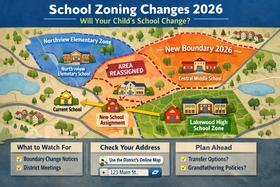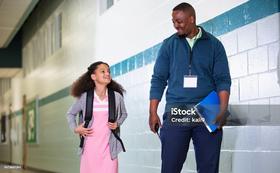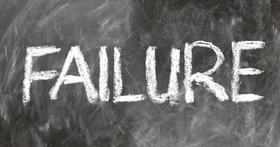Graduation rates are on the rise at high schools across the county, putting the nation on track to achieve a 90-percent graduation rate by the year 2020. However, not all students are faring as well as those numbers make it sound, and plenty of factors may still impact the country’s ability to meet that completion goal. Check out the potential reasons why some states are seeking exponential increases to their own graduation rates, and why some students are not reaping the benefits of those improvements.
New Report Shows Encouraging Numbers
According to Reuters, the positive news comes from a recent report titled, “Building a Grad Nation,” co-authored by a leading expert on dropout rates from Johns Hopkins University, Robert Balfanz. Balfanz and his team noted that graduation rates are improving in an eclectic listing of states that include Texas, Tennessee, and Alaska. The report did not include numbers from Oklahoma or Kentucky since those states used a different formula from the rest to calculate their graduation rates.
The report lists the top performers in terms of graduation rates as Iowa, Vermont, and Wisconsin, which led the country with rates at nearly 90 percent. A handful of states still showed plenty of work ahead in their completion efforts. New Mexico and Nevada fell at the bottom of the pack, with graduation rates that barely reached 60 percent. Nationwide, graduation rates have increased from 71.7 percent in 2001 to 78.2 percent in 2010. In more recent years, that pace has continued to accelerate, which leads experts to believe the U.S. could achieve a national goal of a 90-percent graduation rate by 2020.
“For the first time in 40 years, we have seen significant, sustained improvement,” co-author of the study John Bridgeland told Reuters.
This video reports on increasing graduation rates.
Lower Dropout Rates More than Moral Issue
Improving dropout rates is typically seen as a moral issue of ensuring all children in the U.S. receive the same quality of education to become independent adults. However, the process of increasing graduation rates may also be seen as an economic benefit on a number of levels. The New York Post recently reported that the cost of high school dropouts across the country in regard to lost tax revenue may be as high as $1.8 billion every year.
Education advocates explained that the additional tax revenue could help states balance their budgets without cutting benefits and furloughing government employees. In fact, increasing graduation rates could be one of the fastest and most effective ways to turn around states’ beleaguered economies today. With many states facing much smaller budgets than they did just a few short years ago, this could be good news, indeed.
The group that put together this report, which includes America’s Promise Alliance, Alliance for Education Excellence and the Johns Hopkins School of Education, states that if graduation rates hit the 90-percent mark, that would mean $1.8 billion more revenue from $5.3 billion more wages. In all, this graduation rate would improve economic growth across the country by around $6.6 billion.
While those numbers sound promising, some economic experts warn graduation rates, employment and economic growth may not go together quite that smoothly. Some have even suggested the data used to come up with these numbers was flawed.
“They tend to take the numbers that they find and then extrapolate them. It’s a very simple way of doing things,” Henry Levin, co-director for the Center for Benefit-Cost Studies in Education at Columbia University, told the New York Post. “It’s like saying if my 3-foot-tall child was six feet tall, my child would be able to do all sorts of things. But it doesn’t make any sense to talk that way, because it’s not going to happen right now.”
This video questions whether increasing graduation rates are valid or not.
Some Students Not Included in Positive Numbers
Although graduation rates overall are on the increase, not every student group is enjoying the uptick. The report shows that students with disabilities or learning English as a second language still boast fairly dismal graduation rates. In some states, less than 30 percent of students with disabilities end up finishing high school. The numbers are not much better for minority students, with one-third of African American students and 29 percent of Hispanic students dropping out of high school before they hit graduation time.
Even in states where completion rates are higher than the national average, minority students may not be gaining as much as their white counterparts. In Minnesota, which has one of the worst gaps in the nation, white students are graduating at a rate of around 85 percent. In contrast, African American students and Hispanic students are lucky if they see a 50-percent graduation rate in the state.
Another problem with the current statistics, according to the Huffington Post, is that graduation rates and college readiness may not match up. The publication cites numbers from College Board that show less than half of the class of 2012 showed signs of college readiness. Without the ability to continue one’s education past high school, employment opportunities may still be disappointingly narrow.
This video reports on various tools that can help prevent dropouts and improve graduation rates.
Although there are still concerns about the state of education today, a few bright spots in an otherwise grim outlook are very good news. With graduation rates improving in many areas of the country, states that are struggling can look to the successes of others to beef up their own high school completion. With all states nationwide working together to focus on high school graduation numbers, perhaps the 90-percent rate sighted for 2020 isn’t as difficult to attain as educators and lawmakers once thought.
Questions? Contact us on Facebook. @publicschoolreiew















